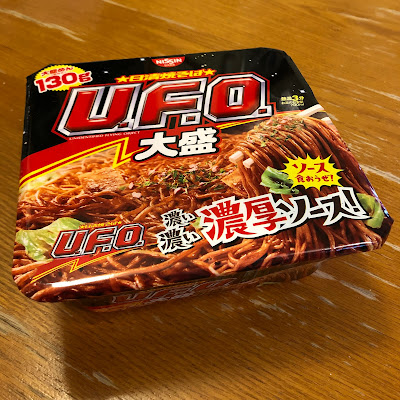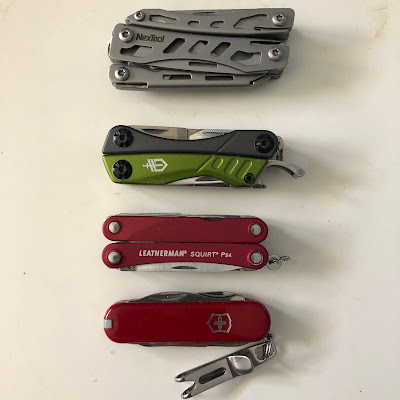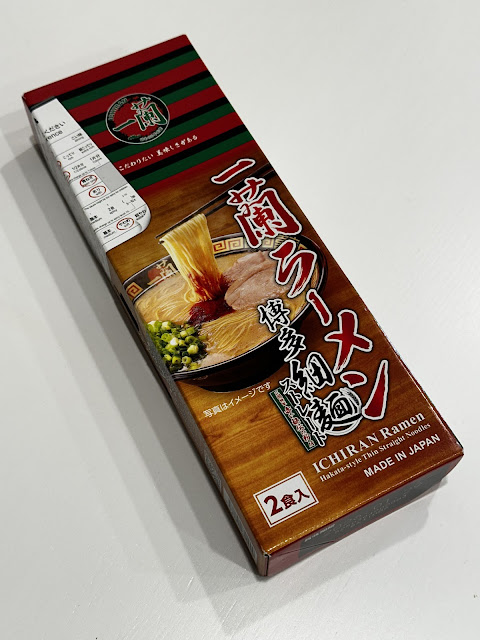This is one very interesting instant noodle cup by Luobawang Foods in China. The first thing I'll mention is that no river snails were actually harmed or processed to make this based on the ingredients list (to my relief). To meet import requirements for other countries, the snail broth can be imitation, so that is why this is Liuzhou River Snail Style Instant Rice Noodle Soup. This noodle cup is also the most complex one I have reviewed to date
due to the large number of ingredients packets needed to complete the
soup.
 |
LBW Liuzhou River Style Instant Rice Noodle Cup 3/4 view. The packaging is actually quite interesting as it exudes a environmentally friendly feel with the plain brown cardboard exterior simple colouring and design.
|
Luosifen 螺螄粉 or snail rice noodle is a soup that originated in Liuzhou city in Guangxi province. The soup stock is made by stewing river snails and pork bones for hours so that the snail meat pretty much dissolves into the broth giving is a mild sweet flavour. Seasoning added to the broth include black cardamom, fennel seeds, dried
tangerine peel, cassia barks, salt, pepper, bay leaves, licorice roots,
sand ginger, and star anise. It usually does not contain snail meat as a topping, but it is instead served with pickled bamboo shoot, pickled green beans, shredded wood ear, fu zhu, fresh green vegetables, peanuts, and chili oil added to the soup. Diners can also add chili, green onions, white vinegar, and green peppers to suit their taste. They are also known as smelly noodles due to the fermented/pickled bamboo shoots.
The dish is served in small "hole-in-the-wall" restaurants, as well as luxury hotel restaurants. In the late 2010s, many luosifen restaurants have opened in Beijing, Shanghai, and Hong Kong, as well as in other countries such as the US. The origin of luosifen is not certain, but many believe it originated in the late 1970s and early 1980s. There are several origin stories about this dish and one of them involves feeding starving tourists with what was on hand. Prepackaged instant luosifen noodles are prepared like
instant ramen. The consumer boils water and adds the prepared sauce or
other vegetables that comes with the package. Mass production of packaged luosifen started in late 2014, making it a nationwide household food. Sales of packaged luosifen boomed during the COVID-19 pandemic as it made it onto some cooking shows in China. https://en.wikipedia.org/wiki/Luosifen
I had no idea that this type of noodle was so popular and famous in China as I don't follow Chinese media and there is also the great internet firewall that keeps it separate from the rest of the world. Needless to say, I was really curious about this noodle cup.
https://www.cnn.com/travel/article/china-food-luosifen-snail-rice-noodles-travel-intl-hnk/index.html
 |
The lid of the noodle cup in a bright reddish pink.
|
 |
Front of the noodle cup. The graphic images are all black silhouettes with character printed in reddish pink. It is a fairly striking design on the plain brown cardboard background. You can see it is a noodle dish from the chopsticks lifting noodles from a bowl. There are chili peppers along the top to let you know it has some heat.
|
 |
This part of the package show images of soup, wood ear mushrooms, cardamon seeds, and river snails
|
 |
There is a huge image of bamboo shoots here! The pungent smell comes from these.
|
 |
Ingredients list in English.
|
 |
Nutritional information.
|
 |
This noodle cup comes with a ton of stuff in the cup. There are rice noodles, bamboo shoots, beard fungus, fried bean curd, pickled vegetables, peanuts, chili oil, and soup base.
|
 |
| Vinegar |
 |
Closeup of all the ingredients packages. This is the most amount of toppings / soup packets I have seen. The original soup is supposed to be fairly complex with all this stuff so it is kind of neat they have all of this.
|
 |
Added boiling water to rehydrate the noodles first. I let it sit for a good six or seven minutes.
|
 |
You then add all of the soup bases and ingriedients. No need to let the toppings rehydrate as they are freshly sealed wet in retort pouches.
|
 |
Closeup of noodles and fried bean curd.
|
Making these noodles was pretty interesting as there were so many sachets and foil packets to open. I added in the soup base and chili oil and then a bit of the vinegar. I'm not a fan of hot and sour or sweet and sour so I had to be a bit careful here. I then added in all of the other ingredients. The soup actually had a lot of flavour and heat to it and I'd describe it as hot and savoury with a hint of sour. There was a bit of an aroma to it, but not super pungent. All of the noodles came out well, with the firmish bite and break that comes with rice noodles. I think the soup could have used a bit more noodle to accompany the fairly large amount of ingredients for an instant noodle cup. The bamboo and other pickled vegetables were somewhat crispy and chewy as they were essentially canned and the peanuts and the fried curd were crunchy. This might have been super popular in China and some other countries in 2020, but I'm not sure I'm a huge fan as it has that flavour profile of many Chinese noodles I'm not fond of. However, it is fairly tasty and I'm pretty sure that people who like this flavour profile would enjoy this!
 |
Closeup of peanuts and bamboo shoot.
|


























Comments
Post a Comment